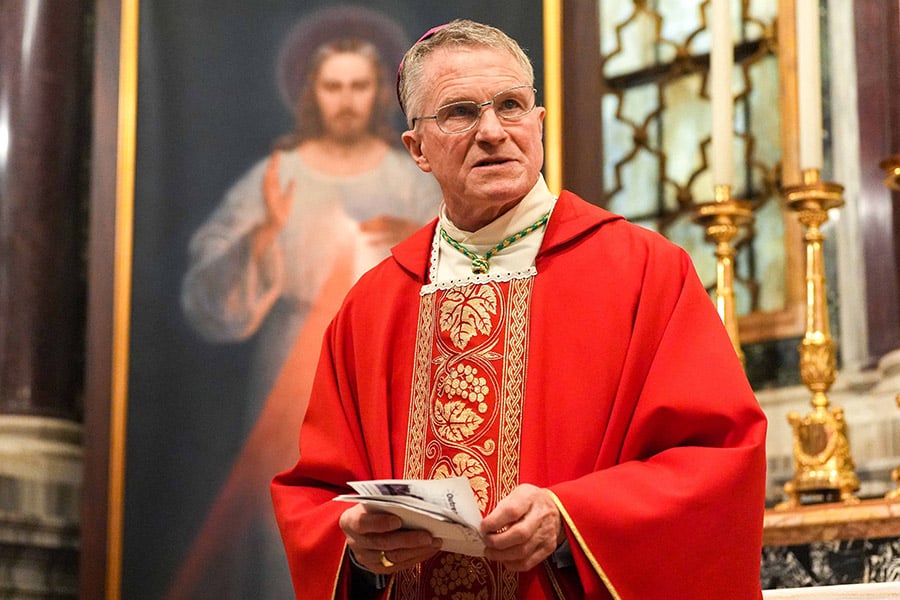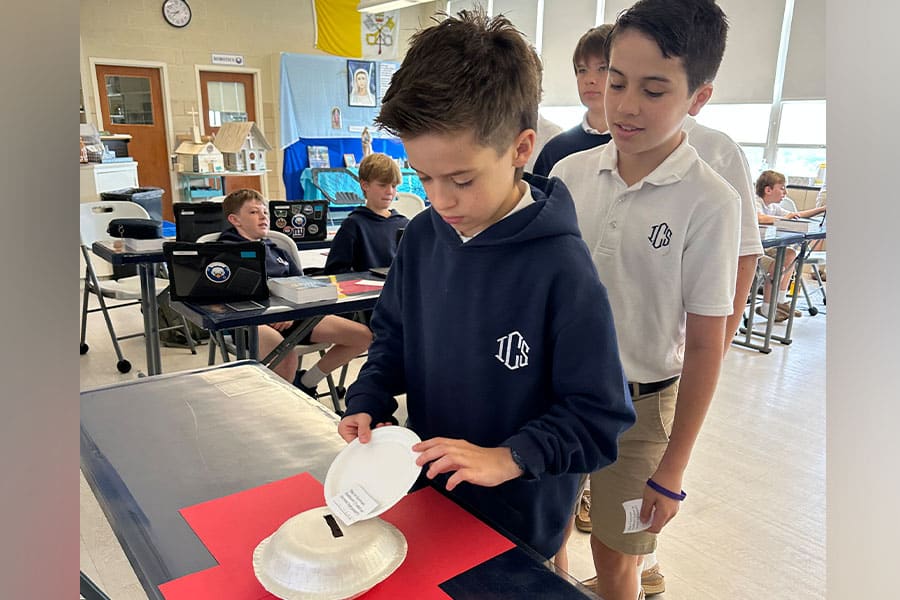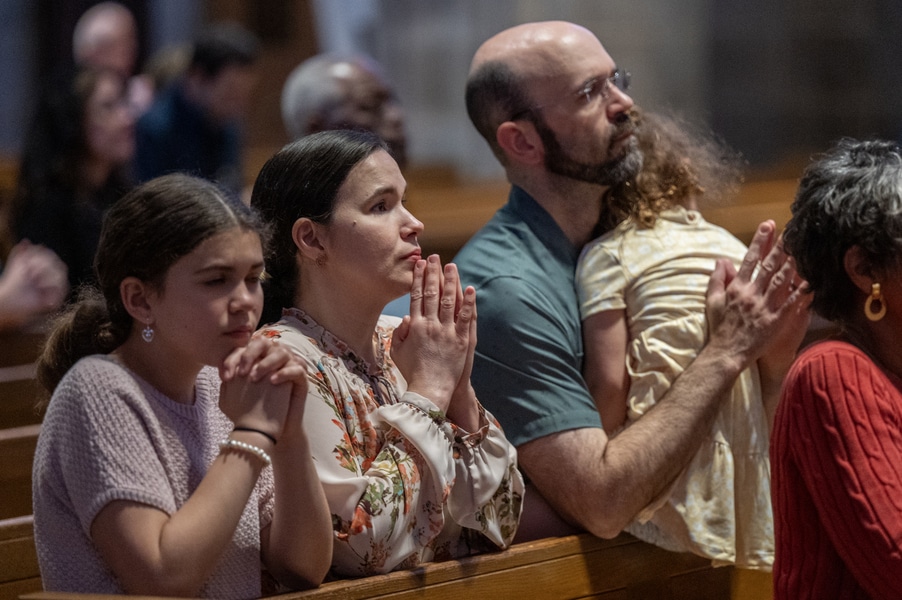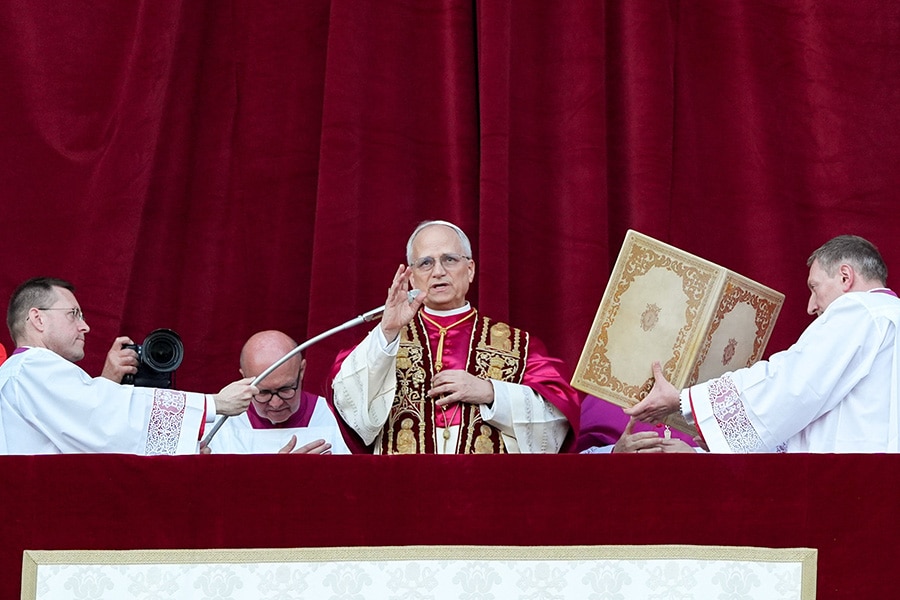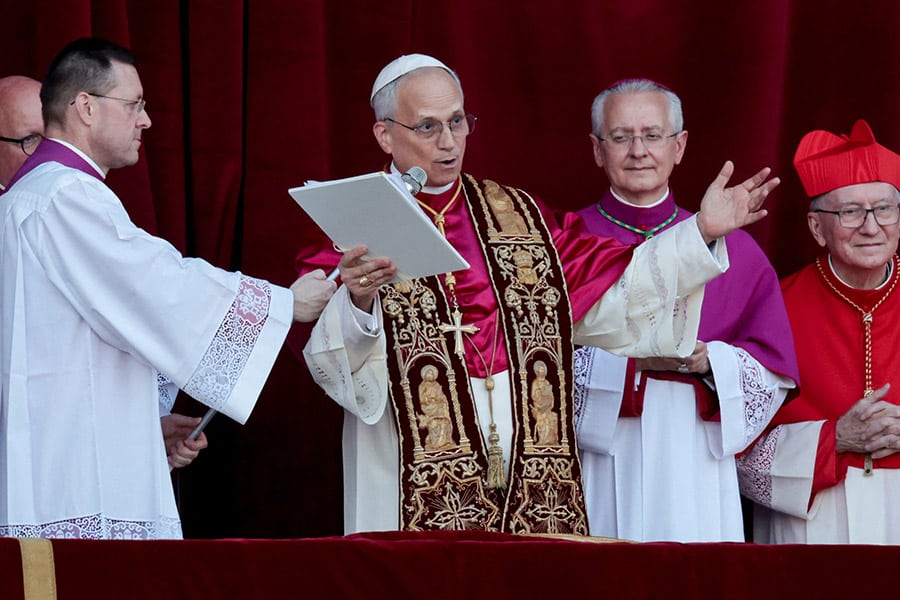ROME (OSV News) — Cardinal Oswald Gracias of India, considered a member of Pope Francis’ inner circle, offered OSV News a candid and deeply personal reflection on the late pontiff’s legacy, the pre-election meetings, and the kind of leader the church needs next. The conclave to elect him starts May 7.
“It was a shock,” the retired archbishop of Bombay recalled of the moment he first learned of Pope Francis’ death on Easter Monday. “I was at lunch with a guest from the Vatican when my secretary came with my phone and showed me a text message that said, ‘Pope Francis no more.’ I told him it could be fake news and asked him to check the BBC or CNN. And they didn’t have anything.”
Soon after, another message confirmed the news, and Cardinal Gracias began preparing for the journey to Rome. “Whenever I came here, I would stay in the Santa Marta residence, where he lived. So I was used to him being the point of reference,” he said. “Everything felt uncertain when I landed that Tuesday.”
Cardinal Gracias had been scheduled to meet the pope in April and was finishing some tasks entrusted to him. The last time they crossed paths was on Feb. 14, at Santa Marta.
“I was having a cup of coffee and saw him being wheeled out, surrounded by Swiss Guards,” he said. “I shook his hand, thinking he had a meeting. Only later did we learn he had been hospitalized.”
Had he known it would be their final encounter, “yes, of course. I would have given him a big hug,” the prelate said.
As a member of the late pope’s Council of Cardinals and one of his most trusted advisers, Cardinal Gracias is acutely aware of the breadth of Francis’ unfinished work when it comes to the reform of the church’s government, the implementation of synodality, and the role laypeople, particularly women, play in the church.
“There is a lot of unfinished business. He was aware that many things were a ‘work in progress,'” the cardinal said. “He had a very clear focus — going to the peripheries. His style was distinct, and it was needed at the time. But we do not need a photocopy of him … the mold is broken.”
The prelate, who will not be entering the Sistine Chapel because he is over the age of 80, told OSV News May 6 that among the many conversations during the general congregations held these days in Rome, the entire college of cardinals discussed continuity and change.
“Most want to carry on (Pope Francis’) legacy, appreciating it. Others want to change things,” Cardinal Gracias said. “And it is healthy to have differences. Francis himself knew there were criticisms to what he was doing.”
Having been in the conclave that elected Cardinal Jorge Mario Bergoglio in 2013, he shared that the atmosphere in the congregations was markedly different back then. “Last time, there was a generalized shock. And though no one said it out loud, we were all internally wondering: who was to blame? Who had let Pope Benedict down?”
This time, he said, the sadness was more personal. “I didn’t just lose the pope. I lost a friend.”
There was also some frustration. “I was grieving Francis, but I was also annoyed at him. He pushed himself too much. I asked myself, why hadn’t the doctors stopped him? Why didn’t he stop himself from recovering properly? But I also understand that he wanted to be with the people.”
The cardinal reflected on the diversity within the current College of Cardinals. “The group is younger. Many are new — 20 of them were created cardinals just last December. Last time, most of us knew one another. This time, we would have benefited from more time together … but no one wanted to linger too long. The life of the church, of our dioceses continues!”
Still, he sees a need for a more collaborative model moving forward. “I would be happy if, once the new pope is elected, he called a meeting of the cardinals — perhaps the group that advised Pope Francis, or all of us — and continued the sharing of what we think the church needs. That could even happen once a year.”
If these meetings were to happen, it would be a resumption of tradition: Up until Pope Francis, whenever there was a consistory for the creation of new cardinals, the entire college of cardinals would gather in Rome for two or three days of meetings.
Cardinal Gracias also believes that whomever succeeds Pope Francis needs to understand that no one expects for him to follow the exact same steps. “Francis wasn’t a Curia man,” he said. “I don’t expect the next pope to stay at Santa Marta instead of the Apostolic Palace just because Francis did. He should be free to choose what’s best for him.”
Nevertheless, the prelate does hope certain priorities continue, including the church’s attention to the poor, migrants and those suffering from environmental degradation.
“Every pope has their style, and all of them have cared for the poor,” he said. “But Pope Francis had a particular concern. I do not expect the next pope to have the same enthusiasm about all these matters, but the basic principle must remain: being a missionary church that cares.”
He acknowledged, however, that during the general congregations, the prelates seemed to agree that not one man can do it all when it comes to filling the mold of what it means to lead 1.4 billion Catholics: “You’d basically need a Superman to do it all. So much is expected of the church — not just by Catholics, but by other Christians, nonbelievers, even governments. It’s for the new pope to decide the priorities. But no one man can prioritize it all.”
One topic that came up repeatedly, he said, was the role of laypeople and women. “These past few days, we spoke a lot about that. Pope Francis made the head of the Vatican’s government a woman. That says something.”
The cardinal was referring to Sister Raffaella Petrini, a Franciscan Sister of the Eucharist, who was appointed president of the Vatican’s governorate earlier this year
Cardinal Gracias stressed that the papacy is about pastoral guidance beyond policies or appointments. “There has been continuity from John Paul II to Benedict XVI to Francis. Different styles — John Paul II was a colossus, Benedict a thinker, Francis a pastor — the world’s parish priest. And the new pope, with his own style, will also lead the church in continuity.”
During upcoming days, the cardinal plans on being in St. Peter’s Square, with the faithful, much like he was on Oct. 16, 1978: “I was there when Cardinal Karol Wojtyla was elected. No one knew who he was. I guessed Eastern Europe by the way he spoke, and then we were scrambling to get information from L’Osservatore Romano. There was no Google at the time!”
As the cardinals prepared to enter the Sistine Chapel on May 7, Cardinal Gracias emphasized unity. “I remember when Pope Benedict said he promised obedience to the Holy Father. We cardinals are the same. We swear loyalty. There will be disagreements, but always loyalty.”
He added: “Pope Francis is telling us not to cling to him. And that’s right. We can’t look for a carbon copy. The church must carry on.”
Read More 2025 Conclave
Copyright © 2025 OSV News


